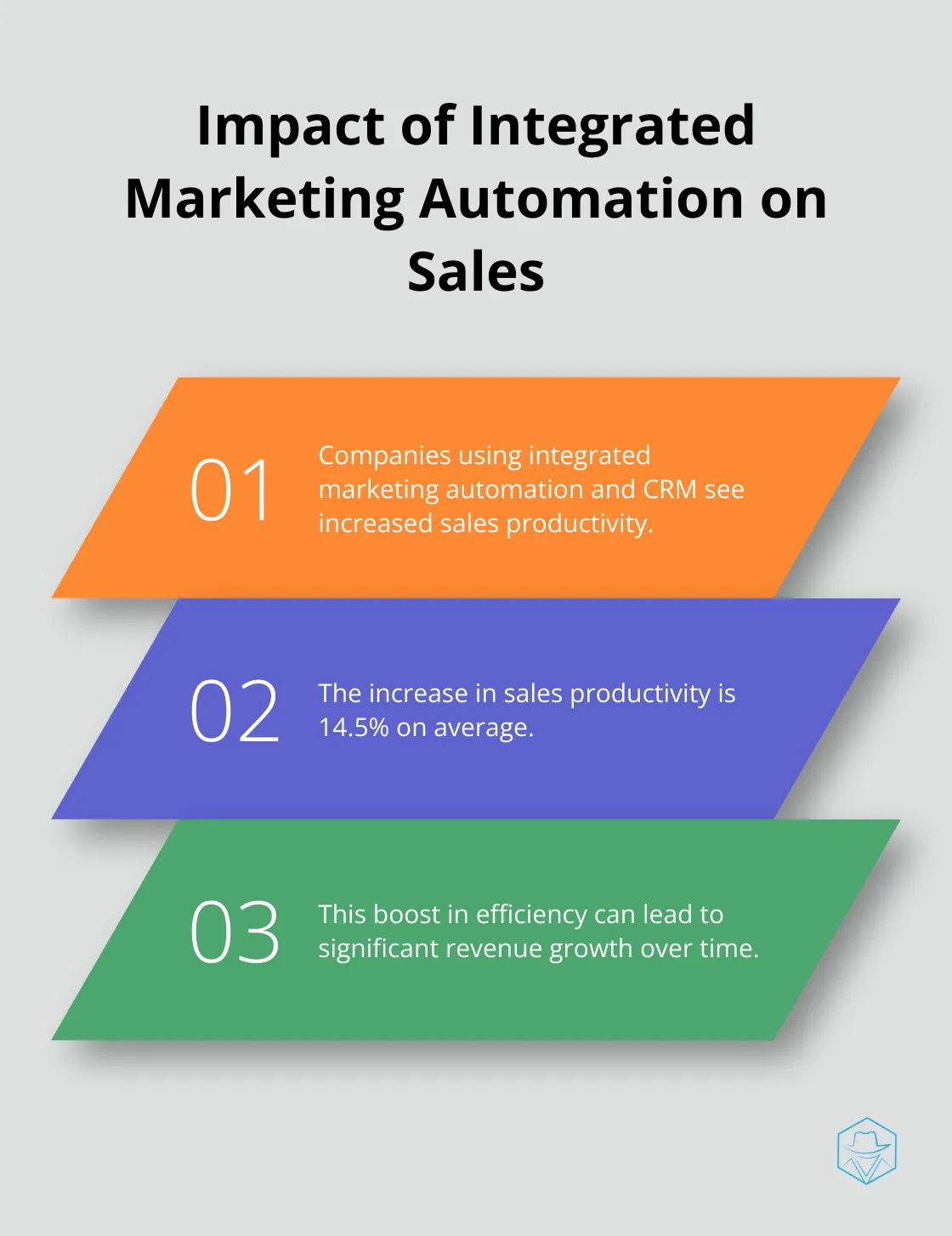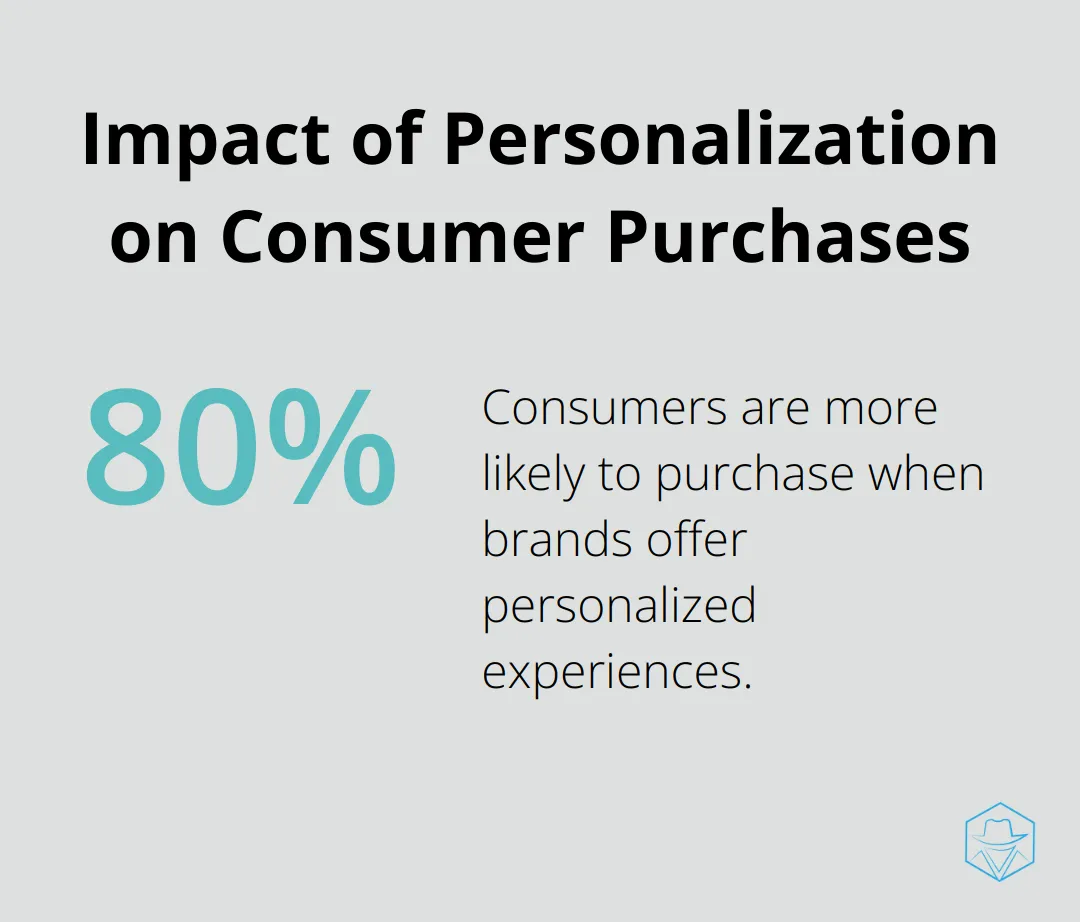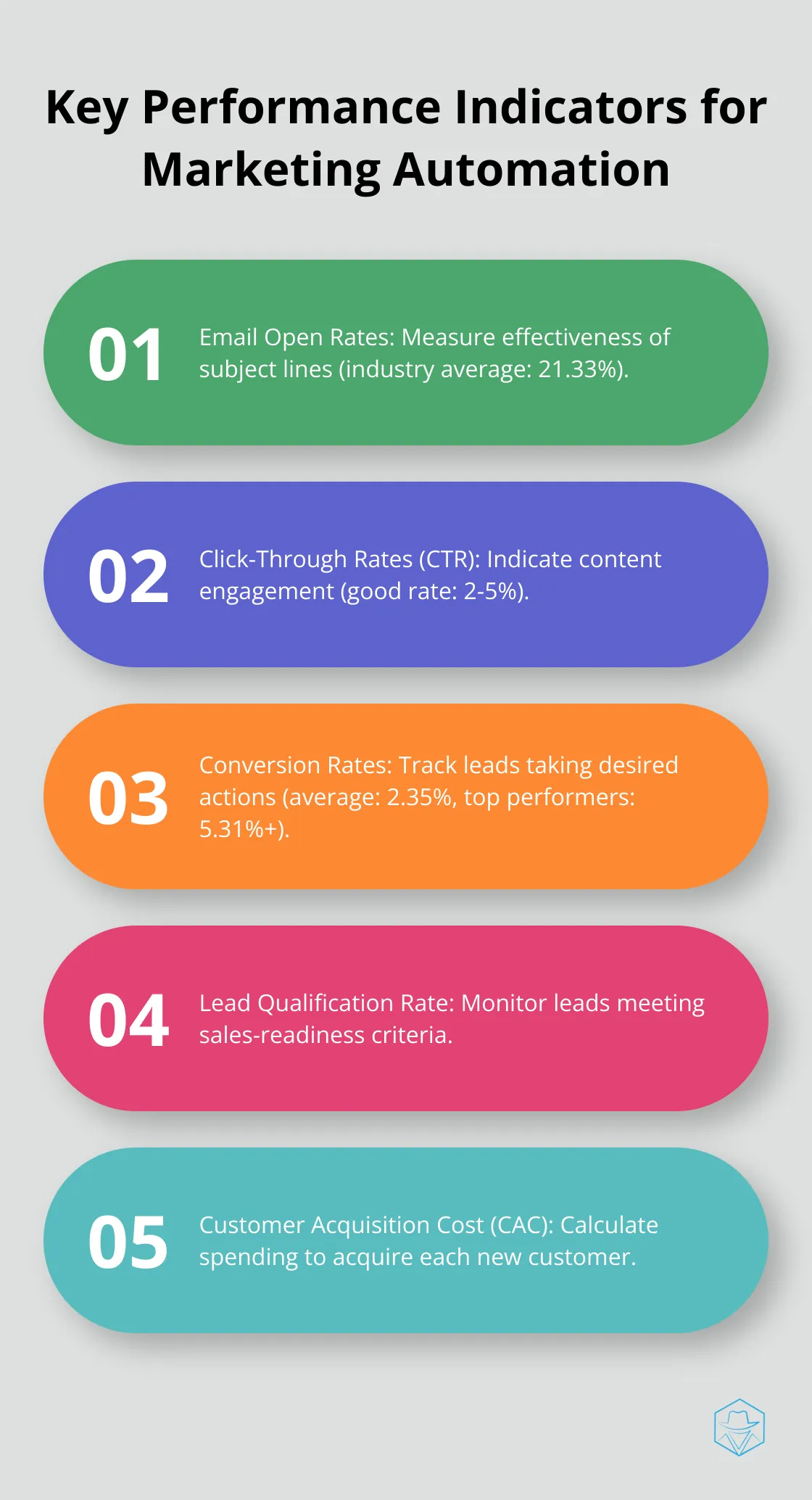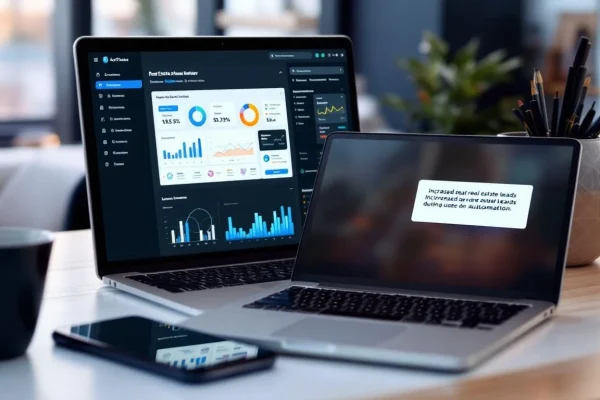Implementing Marketing Automation in Salesforce

Marketing automation in Salesforce is revolutionizing how businesses engage with their customers. At Drop Cowboy, we’ve seen firsthand how this powerful combination can streamline processes and boost ROI.
This blog post will guide you through implementing marketing automation in Salesforce, from setup to optimization. We’ll cover key features, best practices, and metrics to track, helping you harness the full potential of this game-changing technology.
What is Marketing Automation in Salesforce?
Marketing automation in Salesforce transforms how businesses engage with their customers. This technology automates repetitive marketing tasks, which allows teams to focus on strategic initiatives.
Key Features of Salesforce Marketing Automation
Salesforce Marketing Cloud offers a robust set of features for marketing automation:
- Email Marketing: Automates personalized email campaigns based on customer behavior.
- Social Media Management: Schedules and tracks social media posts across platforms.
- Customer Journey Mapping: Creates multi-step, cross-channel customer experiences.
- Lead Scoring: Prioritizes leads based on their likelihood to convert.
The platform excels at creating personalized content at scale. For instance, it can send tailored emails based on a customer’s past purchases or browsing history (a feature that sets it apart from many competitors).
Advanced Segmentation Capabilities
Salesforce’s segmentation tools allow marketers to target their audience with precision. You can segment your customer data in countless ways, ensuring that your marketing messages always hit the mark. This level of targeting proves essential in today’s crowded marketplace where generic messages often fail to resonate.
The Power of Integration
The integration of marketing automation with Salesforce CRM creates a seamless flow of data between sales and marketing teams. Sales representatives can view which marketing campaigns a lead has interacted with, while marketers can track how their efforts impact the sales pipeline.
A study by Nucleus Research found that companies using marketing automation integrated with CRM see a 14.5% increase in sales productivity. This boost in efficiency can translate to significant revenue growth over time.

Salesforce Marketing Cloud in Action
Salesforce Marketing Cloud elevates automation with its AI-powered capabilities. Einstein (Salesforce’s AI engine) predicts which customers are most likely to make a purchase, allowing you to focus your efforts where they’ll have the biggest impact.
Journey Builder, one of Marketing Cloud’s most powerful features, enables the creation of complex, multi-channel customer journeys that adapt in real-time based on customer behavior. For example, if a customer abandons their shopping cart, you can trigger a series of follow-up emails or SMS messages to re-engage them.
While Salesforce Marketing Cloud offers impressive features, it’s worth noting that platforms like Drop Cowboy provide unique capabilities that complement or even surpass some of Salesforce’s offerings, particularly in areas such as voice messaging and SMS marketing.
The next chapter will guide you through the process of setting up marketing automation in Salesforce, ensuring you can leverage these powerful tools effectively.
How to Set Up Marketing Automation in Salesforce
Configuring Your Salesforce Environment
The first step in setting up marketing automation in Salesforce involves proper configuration of your Salesforce instance. This process includes the setup of user roles, permissions, and data structures. Create custom fields and objects to capture specific data points necessary for your marketing automation efforts.
Next, integrate your existing marketing tools with Salesforce. This might include email marketing platforms, social media management tools, or analytics software. Salesforce’s AppExchange offers numerous pre-built integrations to streamline this process (saving you valuable time and resources).
Building Customer Journeys
Customer journeys form the backbone of effective marketing automation. In Salesforce Marketing Cloud, use Journey Builder to map out your customer touchpoints. Start with a simple journey, such as a welcome series for new subscribers.
Define your entry criteria carefully. You might trigger a journey when a lead fills out a form on your website. Then, map out the subsequent steps based on the lead’s behavior. This could include sending a follow-up email after three days, or a special offer if they’ve shown interest in a particular product.
Include decision splits in your journey. These allow you to create different paths based on customer actions. For instance, if a customer opens your email but doesn’t click through, you might send a reminder email. If they do click through, you could move them to a more sales-focused journey.
Personalizing Your Automation
Personalization plays a key role in successful marketing automation. Salesforce’s Einstein AI can help you predict customer behavior and personalize content at scale. Use it to determine the best send times for emails or to recommend products based on past purchases.
Leverage Salesforce’s dynamic content capabilities to tailor your messages. This allows you to swap out sections of your emails or landing pages based on customer data. For example, you could show different product recommendations to customers in different geographic regions.
While Salesforce offers robust personalization features, platforms like Drop Cowboy excel in personalized voice and SMS messaging. Consider incorporating these channels into your automation strategy for a truly omni-channel approach.
A study by Epsilon found that 80% of consumers are more likely to make a purchase when brands offer personalized experiences. This underscores the importance of getting your personalization strategy right.

Optimizing Your Automation Setup
To maximize the effectiveness of your marketing automation, regularly review and refine your setup. Monitor the performance of your customer journeys and make adjustments as needed. Try A/B testing different elements of your automation, such as email subject lines or send times, to identify what resonates best with your audience.
Ensure that your data remains clean and up-to-date. Implement processes to regularly cleanse your database and remove inactive contacts. This will help maintain the accuracy of your segmentation and personalization efforts.
As you become more comfortable with Salesforce’s marketing automation capabilities, you can explore more advanced features. These might include predictive lead scoring, multi-channel campaigns, or integration with other Salesforce products like Sales Cloud or Service Cloud.
The next section will explore how to measure and optimize your automation performance, ensuring you extract maximum value from your Salesforce marketing automation setup.
How to Measure and Optimize Your Salesforce Marketing Automation
Key Performance Indicators for Marketing Automation

To maximize the power of Salesforce marketing automation, you must track these critical metrics:
- Email Open Rates: This metric indicates the effectiveness of your subject lines. The average email open rate across industries stands at 21.33% (according to Mailchimp).
- Click-Through Rates (CTR): This shows how engaging your content is. A good CTR typically falls between 2-5%.
- Conversion Rates: This measures how many leads take the desired action. The average landing page conversion rate is 2.35%, but top performers achieve rates of 5.31% or higher.
- Lead Qualification Rate: This tracks how many leads meet your criteria for sales-readiness.
- Customer Acquisition Cost (CAC): This calculates your spending to acquire each new customer.
- Return on Investment (ROI): This measures the overall effectiveness of your marketing efforts.
Salesforce’s built-in reporting tools simplify the tracking of these metrics. You can set up custom dashboards to monitor these KPIs in real-time, allowing you to quickly identify and address any issues.
Mastering A/B Testing in Salesforce
A/B testing optimizes your marketing automation campaigns. Here’s how to conduct it effectively in Salesforce:
- Choose One Variable: Test one element at a time (subject lines, email content, or call-to-action buttons).
- Set Clear Goals: Define success before starting your test.
- Use Statistically Significant Sample Sizes: Ensure your test groups are large enough to provide reliable results.
- Run Tests Simultaneously: This eliminates external factors that could skew results.
- Analyze and Implement: Use Salesforce’s analytics tools to interpret your results and apply the winning variations to your campaigns.
A/B testing is an ongoing process. You should continuously test different elements to keep improving your performance.
Leveraging Salesforce Analytics for Data-Driven Decisions
Salesforce offers powerful analytics tools that transform raw data into actionable insights. Here’s how to make the most of them:
- Use Einstein Analytics: This AI-powered tool uncovers patterns and trends in your data that might otherwise go unnoticed.
- Create Custom Reports: Tailor your reports to focus on the metrics that matter most to your business.
- Set Up Alerts: Configure Salesforce to notify you when certain metrics fall below or exceed specified thresholds.
- Utilize Predictive Analytics: Use Salesforce’s predictive capabilities to forecast future trends and adjust your strategies accordingly.
- Share Insights Across Teams: Use Salesforce’s collaboration features to ensure all stakeholders have access to relevant data and insights.
Optimizing Campaign Performance
To enhance your marketing automation efforts, try these strategies:
- Segment Your Audience: Use Salesforce’s advanced segmentation tools to target specific groups with tailored messages.
- Personalize Content: Leverage Salesforce’s dynamic content capabilities to customize your messages based on user data.
- Automate Follow-ups: Set up automated follow-up sequences (triggered by specific actions or inactions) to nurture leads effectively.
- Integrate Channels: Combine email, SMS, and social media campaigns for a cohesive marketing strategy. (Platforms like Drop Cowboy excel in SMS and voice messaging integration.)
- Clean Your Data: Regularly update and cleanse your database to maintain accurate segmentation and personalization.
Final Thoughts
Marketing automation in Salesforce has revolutionized how businesses engage with their customers. Companies can create personalized, data-driven campaigns that resonate with their target audience and drive conversions. The landscape of marketing automation continues to evolve, with AI and machine learning set to play an even more significant role in enabling sophisticated predictive analytics and personalization.
Salesforce offers a comprehensive suite of marketing automation tools, but complementary platforms can enhance your marketing strategy. Drop Cowboy’s innovative communication platform provides unique features like ringless voicemail and SMS integration, which can amplify your marketing reach and effectiveness. Successful marketing automation requires consistent analysis of results, testing of new approaches, and attunement to customers’ needs.
Focus on creating meaningful customer journeys, use data for personalization, and always measure and optimize your performance. These foundations will equip you to harness the full potential of marketing automation in Salesforce (and stay ahead in today’s competitive business landscape). Your Salesforce marketing automation strategy will continue to deliver value and drive growth for your business.
blog-dropcowboy-com
Related posts

June 2, 2025
Top-Rated Real Estate CRM: Boost Your Agency’s Efficiency
Boost your agency’s efficiency with a top-rated real estate CRM. Discover essential features and advantages for streamlined operations today.

March 19, 2025
Who Are the Main Competitors of Twilio?
Explore competitors of Twilio and find out which companies are shaping the communication technology landscape with innovative solutions.

May 8, 2025
Inbound Marketing Automation: Attract and Convert
Boost leads with marketing automation for real estate. Attract, engage, and convert prospects effortlessly using effective inbound strategies.

July 20, 2025
Marketing Automation in Real Estate: Increase Leads
Boost leads with real estate marketing automation. Explore strategies and tools to streamline processes and drive success in your property business.

May 27, 2025
Best Alternatives to TCN: How to Choose the Right Call Center Platform
Explore top alternatives to TCN and find the best call center platform to boost efficiency and meet your business needs effectively.

June 16, 2025
Learn How to Go Straight to Voicemail Easily
Studies reveal that 75% of Americans never answer calls from unknown numbers, according to Business Wire. This means your important messages often go unheard. But what if you could reach their voicemail directly, bypassing the ring? Learning how to go straight to voicemail can enhance your communication without causing disruptions. Whether you’re reaching out to clients, prospects, or friends, […]